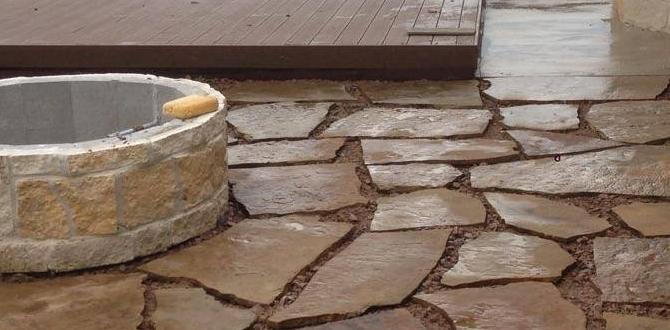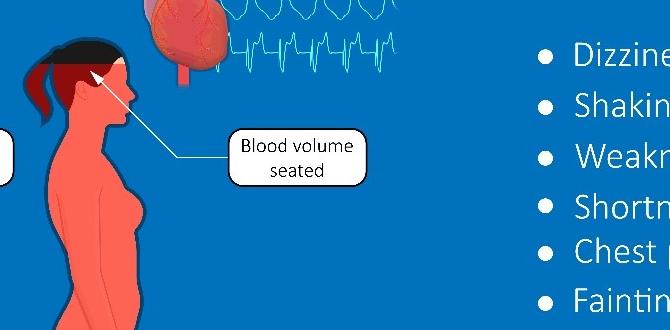Have you ever wondered what makes a garden thrive? Many gardeners face the tough decision of using hay or straw for their plants. Each option has its own benefits. But which one is right for your garden?
Imagine walking through a lush garden, filled with vibrant flowers and tasty vegetables. What if I told you that choosing the right cover can help you grow a better garden? Hay and straw are both popular choices, but they have different properties. Did you know that straw can help keep your soil warm? Or that hay can attract helpful insects?
In this article, we’ll explore the differences between hay and straw. We’ll uncover how each can benefit your garden. Get ready to discover the best option for your gardening needs!
Hay Or Straw For Gardening: Which Is Best For Your Plants? When It Comes To Gardening, Choosing The Right Mulch Or Ground Cover Can Significantly Impact Your Plants’ Health And Growth. Two Popular Options That Many Gardeners Consider Are Hay And Straw. Each Has Its Own Benefits And Drawbacks, And Understanding These Can Help You Decide Which Is Best Suited For Your Gardening Needs. What Is Hay? Hay Is Harvested Grass Or Legume Vegetation That Has Been Dried And Stored For Use As Animal Feed. It Is Typically Rich In Nutrients, Making It A Desirable Option For Gardeners Looking To Enrich Their Soil. However, Hay May Contain Seeds From Weeds, Which Can Cause Issues When Used As Mulch. What Is Straw? Straw, On The Other Hand, Is The Leftover Stalks Of Cereal Crops Like Wheat, Barley, And Oats After The Grains Have Been Harvested. It Is Lower In Nutrients Compared To Hay And Is Less Likely To Contain Weed Seeds. Straw Is Often Used As Mulch Because It Breaks Down Slowly And Helps Retain Moisture In The Soil. Benefits Of Using Hay In Gardening 1. **Nutrient-Rich**: Hay Can Improve Soil Fertility As It Decomposes, Supplying Essential Nutrients To Your Plants. 2. **Organic Matter**: Incorporating Hay Into The Soil Increases Organic Matter Content, Enhancing Soil Structure And Aeration. Benefits Of Using Straw In Gardening 1. **Weed Suppression**: With Fewer Seeds Than Hay, Straw Provides Effective Weed Suppression When Used As Mulch. 2. **Moisture Retention**: Straw Helps Retain Soil Moisture By Creating A Protective Layer On The Surface. Drawbacks Of Each Option Hay – **Weed Growth**: The Presence Of Seeds In Hay Can Lead To Unwanted Weed Growth. – **Cost**: Hay Can Be More Expensive Than Straw, Depending On Local Availability. Straw – **Nutrient Deficiency**: Straw Lacks Nutrients When Compared To Hay, Offering Less Benefit For Soil Health. – **Potential For Pest Attraction**: Straw Can Attract Pests And Rodents, Especially If Not Managed Correctly. Conclusion: Which Is The Better Choice? Ultimately, The Choice Between Hay Or Straw For Gardening Depends On Your Specific Gardening Goals. If You’Re Looking To Enhance Soil Fertility, Hay May Be The Better Option, But Be Prepared For Potential Weed Issues. Conversely, If Your Main Goal Is To Suppress Weeds And Retain Moisture, Then Straw May Be The Ideal Choice. Understanding The Pros And Cons Of Each Will Help You Make An Informed Decision That Best Suits Your Gardening Needs.
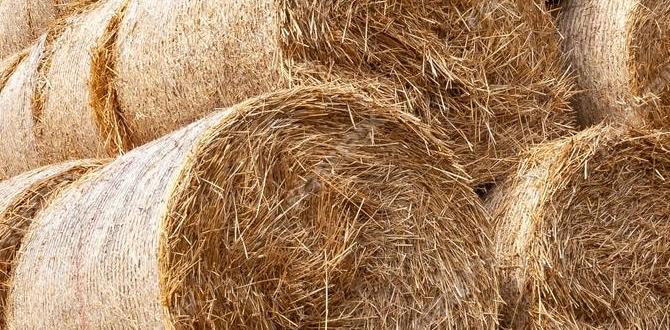
Hay or Straw for Gardening
Choosing between hay and straw can be tricky for gardeners. Hay is rich in nutrients but may contain seeds. This could lead to unwanted weeds in your garden. On the other hand, straw is dry, clean, and perfect for mulching. It helps keep moisture in and can protect plants. Have you ever considered using these materials for composting? They can break down and enrich your soil over time. Each option offers unique benefits to help your garden thrive.Understanding Hay and Straw
Definition and composition of hay.. Definition and composition of straw..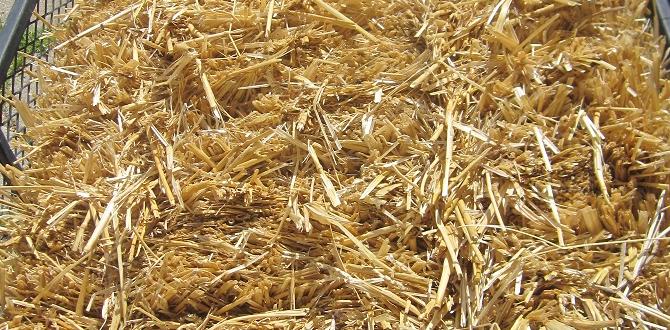
Hay and straw are often confused, but they are quite different! Hay is made from dried grass, rich in nutrients. It’s like a salad for your garden. On the other hand, straw comes from cereal crops like wheat. It’s more like the garden’s blanket, providing protection to the soil. Both are useful, but knowing their differences helps you decide what your plants need!
| Feature | Hay | Straw |
|---|---|---|
| Source | Dried grass | Cereal crops (e.g., wheat) |
| Nutritional Value | High | Low |
| Usage | Fertilizer and animal feed | Mulch and ground cover |
So, the next time you’re gardening, remember: hay feeds your plants, while straw keeps them cozy!
Benefits of Using Hay in Gardening
Nutritional value and organic matter contribution.. Moisture retention and temperature regulation properties..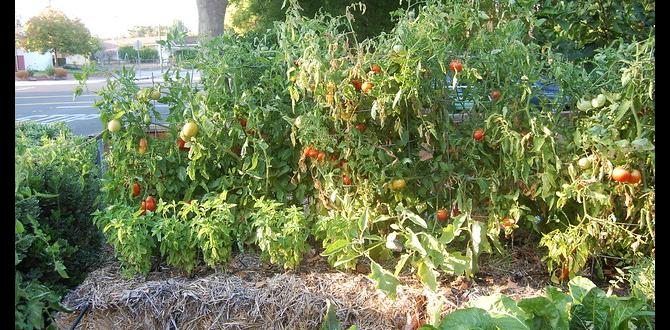
Using hay in your garden can be quite beneficial! First, it brings nutritional value by adding essential organic matter to the soil, helping plants grow big and strong. Think of it as a special fertilizer that plants love. Plus, hay is great for moisture retention and keeps the soil cool during hot days. Your plants will stay happy and hydrated, sort of like their own little spa day! And what’s more? It’s like a cozy blanket for your garden! Just be prepared for it to attract a few curious critters—like rabbits who think they’ve found a buffet.
| Benefit | Description |
|---|---|
| Nutritional Value | Provides essential nutrients to plants. |
| Moisture Retention | Keeps soil moist, even on hot days. |
| Organic Matter | Improves soil structure and fertility. |
Advantages of Straw in Gardening
Weed suppression and soil erosion prevention.. Lightweight and easy to handle for garden projects..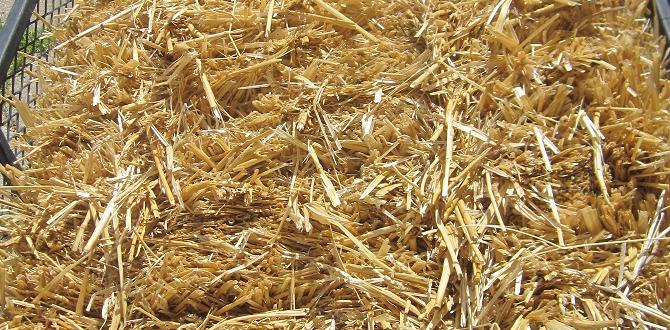
Straw is a champ in the gardening game! It helps keep pesky weeds at bay and can stop soil from washing away like secrets in a gossip circle. Giving your plants a comfy blanket, straw is super light and easy to toss around. No weightlifting muscles needed here! Plus, it naps snugly on your soil, so you can relax knowing your garden is safe. Take a look at these fun facts:
| Advantage | Description |
|---|---|
| Weed Suppression | Straw blocks sunlight, making it tough for weeds to grow. |
| Soil Erosion Prevention | Keeps soil in place, even during heavy rain. |
| Lightweight | Easy to handle, no gym required! |
Comparative Analysis: Hay vs. Straw
Price differences and economic considerations.. Nutrient content comparison and suitability for plants..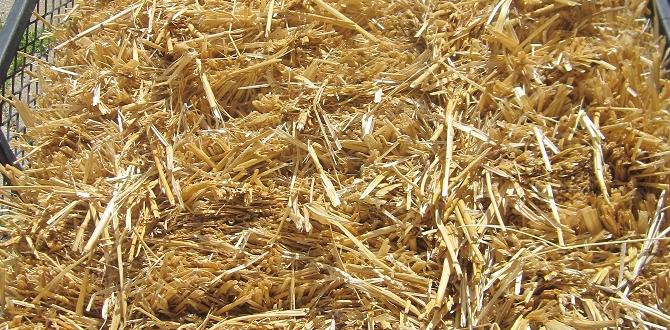
When it comes to gardening, the choice between hay and straw isn’t only about looks, but also about your wallet and your plants’ happiness. First off, hay can cost more since it’s packed with nutrients and is a favorite snack for farm animals. Meanwhile, straw usually comes at a cheaper price since it’s mostly leftover stalks with less nutritional value. But which one really helps your plants grow?
| Type | Price | Nutrient Content | Best For |
|---|---|---|---|
| Hay | Higher | Rich in nutrients | Vegetable gardens |
| Straw | Lower | Low in nutrients | Weed control |
Essentially, if you want your garden to thrive, hay can give a nutrient boost, while straw is great for keeping weeds at bay. Choose wisely, or you might invite a garden party of pests instead!
Use Cases for Hay in the Garden
Mulching techniques and benefits.. Composting with hay for nutrientrich soil..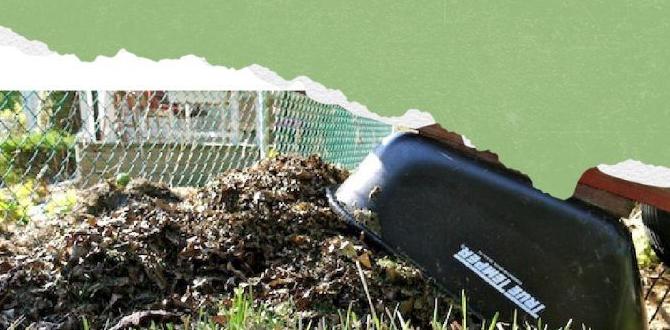
Using hay in the garden offers many benefits. First, it works great as mulch. This helps keep weeds down and the soil moist. Mulch also makes your garden look tidy. Composting with hay is another smart choice. It adds nutrients to your soil. Plus, it breaks down quickly, enriching your garden. Healthy soil means healthy plants!
What are the benefits of hay mulching?
Using hay as mulch helps control weeds, retains soil moisture, and keeps plant roots warm.
Key Benefits of Composting with Hay:
- Improves soil structure
- Adds vital nutrients
- Promotes healthy plant growth
Use Cases for Straw in the Garden
Effective applications for vegetable and flower beds.. Straw bale gardening as an innovative method..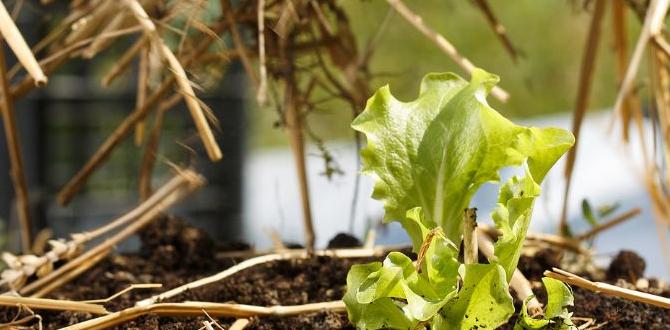
Straw is a true garden superstar! It helps with vegetable and flower beds by keeping weeds at bay and retaining moisture. Imagine a garden bed that drinks less water and needs less weeding. Sounds dreamy, right? Straw can also be used in the fun method called straw bale gardening. This method gets your plants growing in bales instead of dirt. That’s right, your veggies could be living in a cozy straw home! Who knew plants could be such homebodies?
| Use Case | Description |
|---|---|
| Mulching | Retains moisture and blocks weeds in beds. |
| Straw Bale Gardening | Grows plants in bales; easy and unique! |
Potential Drawbacks of Hay and Straw
Issues with pests and weed seeds in hay.. Nutrient depletion and availability challenges in straw..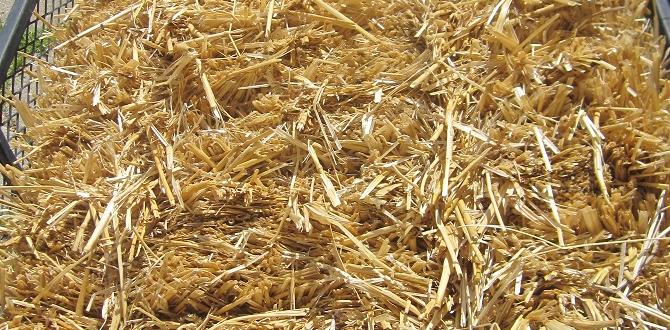
Using hay and straw in gardens can have some problems. Pests like insects may come along with hay. They may cause trouble for your plants. Also, hay can bring in weed seeds, leading to more unwanted plants. On the other hand, straw doesn’t always give enough nutrients. Plants that need food might struggle to grow well. It can make it hard for nutrients to be available in the soil.
What kinds of pests can come with hay?
Using hay might invite pests like slugs and mice. These creatures can harm your plants. Insects may also hide in the layers of hay, causing extra trouble.
Potential issues with straw:
- Straw might not break down quickly enough.
- It can suck up nutrients, making them less available.
Best Practices for Incorporating Hay and Straw
Tips for sourcing highquality materials.. Recommendations for application methods and timing..Finding good hay or straw for your garden can be fun! Start by checking local farms or garden centers. Always look for clean, dry, and pest-free materials. Avoid anything moldy or damp—your plants might not appreciate that! Timing is key too. Spread the hay or straw around your plants just before the rain or watering time. This helps keep moisture in the soil. Remember, using it too early? That could lead to a pesky weed party. Here’s a handy table for you:
| Tip | Details |
|---|---|
| Sourcing | Check local farms for clean, high-quality hay. |
| Application Method | Spread around plants during watering. |
| Timing | Before rain is perfect! |
Follow these tips, and your garden will thank you—maybe even with a little dance in the wind!
Frequently Asked Questions about Hay and Straw
Addressing common misconceptions.. Clarifying the best practices for different gardening scenarios..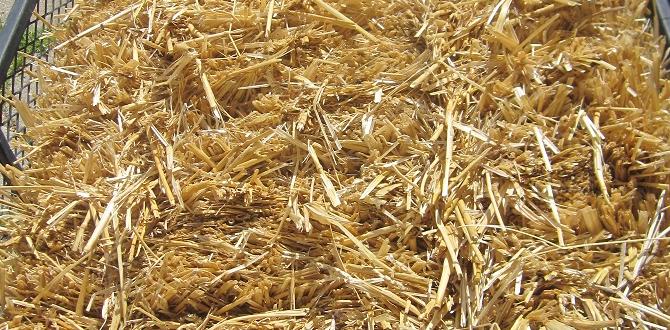
Many people mix up hay and straw for gardening, but they are not the same! Hay is cut grass and is often used as animal fodder, while straw is the leftover stems from grains. Want to avoid the confusion? Here’s a quick guide to help clear things up:
| Type | Use in Gardening |
|---|---|
| Hay | Great for compost but can sprout weeds! |
| Straw | Perfect for mulch and does wonders for your plants! |
Remember, the best choice depends on your gardening goals. If you want cozy and weed-free gardens, go for straw! Happy gardening! And who knows, your plants might grow as big as your dreams!
Conclusion
In conclusion, both hay and straw can help your garden. Hay adds nutrients, while straw blocks weeds. You can use straw as mulch or to improve soil. Remember to check for weeds in hay before using it. Now that you know the basics, why not try using straw in your garden? Happy gardening!FAQs
What Are The Primary Differences Between Hay And Straw In Terms Of Gardening Applications?Hay is made from cut grass and other green plants. It’s used to feed animals and can add nutrients to soil when it breaks down. Straw comes from leftover grains like wheat and is dry and yellow. We use straw for mulch to keep plants warm, stop weeds, and keep moisture in the soil. So, hay is for feeding, while straw is for gardening and helping plants grow!
How Can Hay And Straw Be Used As Mulch In Garden Beds?You can use hay and straw as mulch in your garden. They cover the soil and help keep it moist. This stops weeds from growing and keeps the plants healthy. As they break down, they add nutrients to the soil. So, hay and straw help your garden grow better!
What Are The Benefits And Drawbacks Of Using Hay Versus Straw For Weed Control In Gardening?Using hay for weed control adds nutrients to the soil and can help keep the ground moist. However, hay often has weed seeds, which can make your garden messier. On the other hand, straw is cleaner and helps stop weeds from growing while keeping your garden tidy. But straw doesn’t add many nutrients, so you might need to add fertilizer. Choose what works best for your garden!
Is It Safe To Use Hay In Compost Piles, And How Does It Compare To Straw In This Context?Yes, you can use hay in compost piles, but it can bring some unwanted seeds. These seeds might grow plants you don’t want. Straw is better because it has fewer seeds and breaks down well. Both hay and straw help make rich soil, but straw is usually safer for composting.
How Do Hay And Straw Impact Soil Health And Fertility When Incorporated Into Garden Soil?When you add hay and straw to garden soil, they help keep it healthy. They break down and feed the plants. This makes the soil richer and full of nutrients. Hay and straw also help the soil hold water better. This means your garden can grow stronger and greener!
{“@context”:”https://schema.org”,”@type”: “FAQPage”,”mainEntity”:[{“@type”: “Question”,”name”: “What Are The Primary Differences Between Hay And Straw In Terms Of Gardening Applications? “,”acceptedAnswer”: {“@type”: “Answer”,”text”: “Hay is made from cut grass and other green plants. It’s used to feed animals and can add nutrients to soil when it breaks down. Straw comes from leftover grains like wheat and is dry and yellow. We use straw for mulch to keep plants warm, stop weeds, and keep moisture in the soil. So, hay is for feeding, while straw is for gardening and helping plants grow!”}},{“@type”: “Question”,”name”: “How Can Hay And Straw Be Used As Mulch In Garden Beds? “,”acceptedAnswer”: {“@type”: “Answer”,”text”: “You can use hay and straw as mulch in your garden. They cover the soil and help keep it moist. This stops weeds from growing and keeps the plants healthy. As they break down, they add nutrients to the soil. So, hay and straw help your garden grow better!”}},{“@type”: “Question”,”name”: “What Are The Benefits And Drawbacks Of Using Hay Versus Straw For Weed Control In Gardening? “,”acceptedAnswer”: {“@type”: “Answer”,”text”: “Using hay for weed control adds nutrients to the soil and can help keep the ground moist. However, hay often has weed seeds, which can make your garden messier. On the other hand, straw is cleaner and helps stop weeds from growing while keeping your garden tidy. But straw doesn’t add many nutrients, so you might need to add fertilizer. Choose what works best for your garden!”}},{“@type”: “Question”,”name”: “Is It Safe To Use Hay In Compost Piles, And How Does It Compare To Straw In This Context? “,”acceptedAnswer”: {“@type”: “Answer”,”text”: “Yes, you can use hay in compost piles, but it can bring some unwanted seeds. These seeds might grow plants you don’t want. Straw is better because it has fewer seeds and breaks down well. Both hay and straw help make rich soil, but straw is usually safer for composting.”}},{“@type”: “Question”,”name”: “How Do Hay And Straw Impact Soil Health And Fertility When Incorporated Into Garden Soil? “,”acceptedAnswer”: {“@type”: “Answer”,”text”: “When you add hay and straw to garden soil, they help keep it healthy. They break down and feed the plants. This makes the soil richer and full of nutrients. Hay and straw also help the soil hold water better. This means your garden can grow stronger and greener!”}}]}
